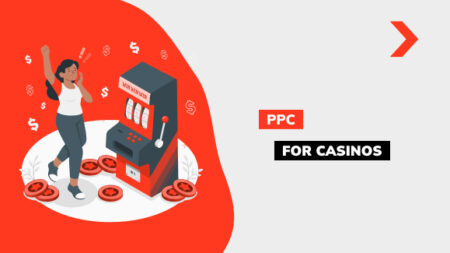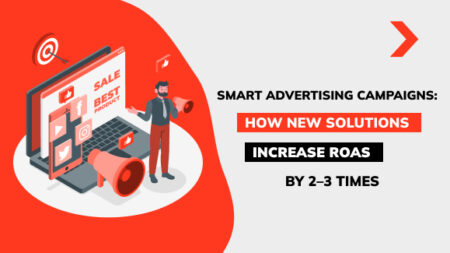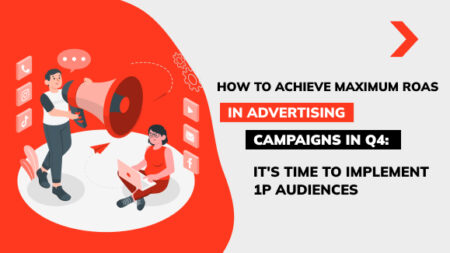PPC in Digital Marketing: The Ultimate Guide
In today’s fast-paced digital landscape, Pay-Per-Click (PPC) advertising has become an indispensable tool for marketers aiming to reach their target audience effectively. This comprehensive guide delves into the nuances of the model in digital advertising, from understanding its core concepts to executing successful ad circulation.
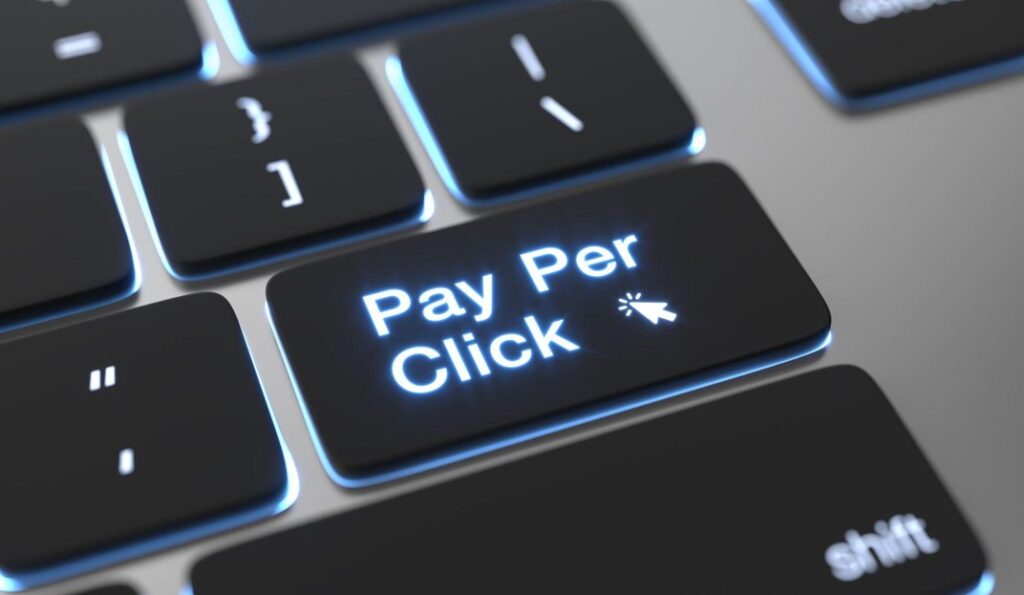
What is PPC and Digital Marketing?
PPC stands for pay-per-click, an online advertising model where advertisers pay a fee each time their ads are clicked. With this advertising model, you can target ads to a certain market, interests, and keywords to reach the people who are most likely to be engaged in your offerings.
Digital marketing strategy uses marketing channels to promote services; it entails PPC or other channels like search engine optimization (SEO), social media, and email marketing. Digital marketing can be an effective way to reach a large audience and gain objectives.
Definition of PPC and its Role in Digital Marketing
PPC, or Cost-Per-Click (CPC), is an advertising model where a company only pays when a user clicks on their ad. They bid on keywords relevant to their offerings, and their ads appear on search engine results pages (SERPs). This strategy is crucial in advertising to reach certain goals and results.
Key PPC Concepts
All campaigns hinge on critical parts: ad groups organize ads by theme with correct keywords. Bids define the cost per click to refine visibility and budget, while Quality Score is a rating by ad networks based on relevance and page quality. It can reduce costs, improving ranks.
Pay-Per-Click Model
In Cost-Per-Click (CPC) advertising, you only pay when a user clicks the ad. The final fee depends on your bid, ad quality, and competition. So, higher bids or relevant ads lead to lower costs per click. This targeted method helps to reach prospects actively searching for what you offer.
Benefits of PPC Ads
- Quick Visibility: Target buyers looking for your service on search algorithms and social media.
- Precise Targeting: Reach the ideal audience with precision by selecting their data on interests and behaviors.
- Measurable Results: Monitor ad performance in detail with clicks, converts, and cost per acquisition (CPA).
- Improve Campaigns: Maximize ROI by optimizing ad sets based on data.
PPC: Effective & Data-Driven Ads
Running PPC Campaigns
Running ads can be a great way to drive traffic to your website and generate leads or sales. However, it’s important to do your research and plan your campaigns carefully in order to be successful.
The Bidding Process
The bidding process in pay-per-click involves setting a bid amount for each key search term or ad placement. Advertisers compete in an auction where the highest bid typically secures the top ad position. Effective strategies balance bid amounts with budget constraints and desired outcomes, ensuring maximum exposure and cost efficiency.
Crafting Powerful PPC Ads
Mastering the art of text ads starts with a strong copy. Focus on clear headlines that grab attention and highlight your value proposition. Use relevant key search terms throughout the ad group to ensure they align with user searches. Don’t forget a compelling call to action that tells users exactly what you want them to do next.
Understanding Your Audience
Knowing your ideal customer is key to paid search success. Demographics (age, location) and behavior (browsing habits, purchase history) help you tailor ads that resonate. The right message for the right person leads to better converts.
Writing Compelling Ad Copy
Craft clear, catchy headlines that grab attention. Highlight your unique selling proposition and the benefits users crave. Weave relevant key search terms naturally. End with a compelling call to action — tell users exactly what you want them to do next (e.g., Shop Now or Learn More).
Targeting the Right Keywords
Keywords are the foundation of paid advertising. Choose terms relevant to your offerings and that match what your ideal audience is searching for. Research high-volume, but not hyper-competitive, key search terms to maximize reach without breaking the bank. Consider including long-tail PPC keyword research for more specific searches and potentially lower costs.
Creating Effective Landing Pages
An effective lead capture page complements your PPC ads by providing a seamless user experience. It should be relevant to the ad content, visually appealing, and optimized for conversions. Including a clear CTA and ensuring mobile responsiveness are critical for maximizing actions.
Tracking and Analyzing Your Results
Don’t run PPC campaigns blindly! Track key metrics like clicks, actions, and costs. Use analytics tools to identify what’s working and what’s not. Continuously tweak and Improve based on data to maximize your return on investment (ROI). Remember, successful PPC is an ongoing process of learning and improvement.
Landing Pages & Tracking
Why Landing Pages Matter for PPC
Imagine a user clicks your ad, eager to learn more. A well-designed sales page picks them up, seamlessly continuing the ad’s message. It offers a clear value proposition and compels them to take action, like signing up or buying. Marketing pages are make-or-break for PPC. Without a relevant, optimized page, you risk losing that crucial click. They bridge the gap between ad and action, turning clicks into satisfied customers.
Tracking Conversions (Sales, Leads)
Did that ad click turn into a sale? PPC success hinges on tracking converts — actions like purchases or form submissions. Most Online advertising platforms and analytics tools (like Google Analytics) offer action-tracking features. Set up conversion goals to see how many clicks translate to valuable actions. This data empowers you to optimize campaigns and focus on strategies that drive results.
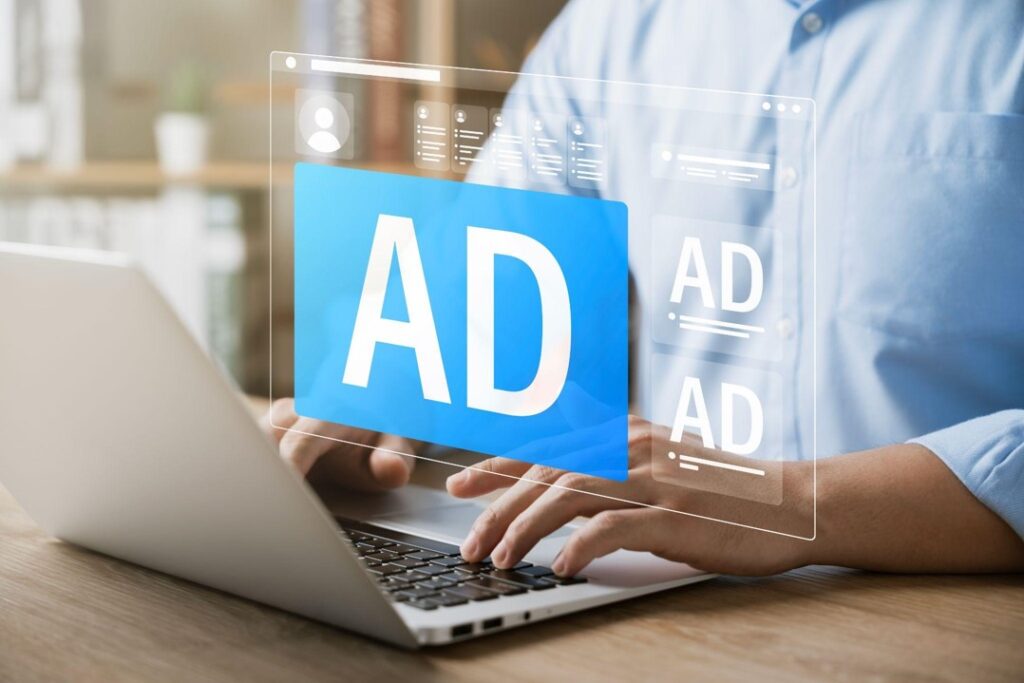
Popular PPC Platforms
There are many popular PPC platforms available, each with its strengths and weaknesses. The best platform for you will depend on your specific needs and goals. Here are a few of the most popular PPC platforms:
Google Ads: The PPC Leader
Google Ads is the world’s most popular PPC platform, offering unmatched reach and powerful targeting capabilities. Create targeted ads on search engine results pages (SERPs), YouTube videos, and various websites. Reach a highly relevant audience, track campaign performance in detail, and optimize for maximum return on investment (ROI) — all within Google Ads.
Setting Up Your Campaign
Setting up a Google Ads campaign involves:
- Define your goals.
- Set your budget.
- Choose your campaign type.
- Target your ideal audience.
- Craft compelling ad copy.
- Set your bids.
- Launch and monitor.
Targeting Options (Keywords, Demographics)
Google Ads provides various targeting options, including keyword targeting, demographic targeting, and interest-based targeting. These options help refine your audience, ensuring your ad group reaches the most relevant users. By grouping related key search phrases and ads within ad groups, advertisers can optimize bidding strategies, improve ad relevance, and enhance campaign performance.
Exploring Other Options
Facebook Ads
Facebook Ads go beyond just search. Reach a massive audience on Facebook and Instagram with highly targeted PPC campaigns. Leverage Facebook’s rich user data to target demographics, interests, and online behaviors. Create engaging ad formats like images, videos, and carousels to grab attention and drive actions.
Bing Ads
Bing Ads offers a compelling alternative to Google Ads. Target a different audience segment within the Microsoft Search Network, potentially reaching users less bombarded with ads. This can lead to lower costs per click and higher conversion rates for your campaigns.
LinkedIn Ads
LinkedIn Ads are ideal for B2B marketing, enabling advertisers to target professionals based on job title, industry, and company size. This platform is particularly effective for lead generation and brand awareness campaigns in professional settings.
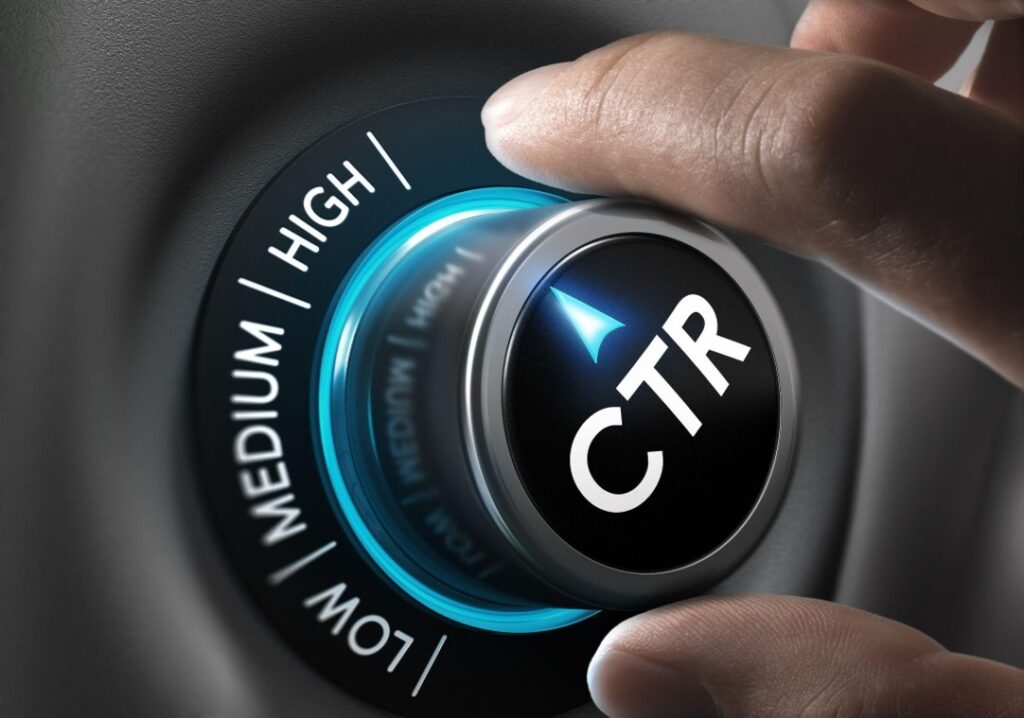
Managing Your PPC
PPC campaigns can be powerful tools, but running them smoothly requires ongoing management. Here are some key aspects to focus on:
Monitoring & Optimizing Campaigns
Regularly monitor key metrics like clicks, actions, and costs. Leverage analytics tools to identify areas for improvement. A/B tests different ad variations, destination pages, and bids to see what performs best. Remember, PPC is an ongoing process. By continually tweaking and refining based on data, you can maximize your return on ad spend (ROAS).
A/B Testing for Improvement
A/B testing is a powerful tool to fine-tune your PPC campaigns. It involves creating variations of an ad element (headline, image, call to action) and showing them to different audience segments. This can lead to lower costs per click and higher convert rates for your campaigns.
A/B testing ultimately drives more actions and improves your return on ad spend (ROAS).
Cost-Per-Click (CPC) & Budget Efficiency
Managing your cost-per-click is vital for maintaining budget efficiency. Setting appropriate bids and optimizing ad quality can reduce CPC, ensuring you get the most value from your budget.
Managing CPC and ensuring budget efficiency are key aspects of successful PPC ads. By implementing these strategies, you can keep your CPC in check and ensure you deliver maximum results without overspending.
Measuring Return on Investment (ROI)
Measuring ROI involves comparing the revenue generated from PPC campaigns to the cost of running them. This metric helps determine the overall effectiveness of your PPC strategy and guides future investment decisions. When evaluating success, consider other factors like brand awareness, website traffic, and lead quality. Ultimately, a well-run PPC ad delivers a positive ROI and aligns with your overall marketing goals.
Advanced PPC Strategies
This approach is used in advertising to improve campaigns, target certain audiences, and raise conversions. So, advanced pay-per-click advertising extends beyond simple keyword targeting and bidding. They entail segmenting people, remarketing, optimizing ad copy, and data-driven decision-making.
Remarketing Campaigns
It’s a strategy that allows you to sell ads to people who have previously visited a website. With a retargeting campaign, you can engage those leads or clients who left the website without converting or helping you to reach your marketing goal.
Dynamic Search Ads
Responsive and dynamic ad formats attempt to drive the same: more relevant ads that’ll lead to more clicks. However, dynamic search advertising strongly relies on your landing sites’ content. In fact, more flexible, dynamic paid search ads are optimal for split testing and prompt optimization.
Utilizing AI and Automation in PPC
AIs have turned the way campaigns are designed, implemented, and adjusted, resulting in superior results through precision and insight. By automating the main steps, you may save time and money and improve the success of your efforts.
Common PPC Challenges
Campaigns may promptly appear expensive, especially in competitive fields or for high-demand keywords. Your clicks cost money, and if not controlled effectively, fees can spiral out of control, resulting in inefficient resource use. If the conversions aren’t properly configured, it’ll be impossible to assess the execution of campaigns and figure out where changes are required.
Click Fraud
Similar roguery happens when a human or a software program clicks through ads as legitimate users but has no interest in the item. To combat click fraud, try to manually analyze traffic quality, filter clicks from dubious sources, monitor ad positions, and employ CAPTCHA verification.
Balancing Budget and Bidding
With a clear money allocation, you can spend within the set means and profit from your efforts. On the contrary, optimal bidding prevents you from overpaying for ads, ensuring that your current ads appear in the most effective spots.
Low Click-Through Rates (CTR)
Such rates indicate that an ad or webpage isn’t engaging or highly relevant enough for the user; it can be linked to inadequate ad copy or targeting. To solve low CTR, give ad relevance, try multiple ad formats, and fine-tune targeting for engagement.
PPC vs. SEO: A Quick Comparison
PPC (pay-per-click) and SEO (search engine optimization) are powerful online advertising tools, but they work differently:
- PPC: You only pay when users click your ad, making it a great option for driving fast traffic and conversions. However, PPC requires ongoing investment to maintain ad visibility.
- SEO: Focuses on organic search visibility. By optimizing your website and content, you can rank higher in search results for free. Search engine marketing delivers long-term benefits like increased brand awareness and qualified traffic. However, it takes time and effort to see results.
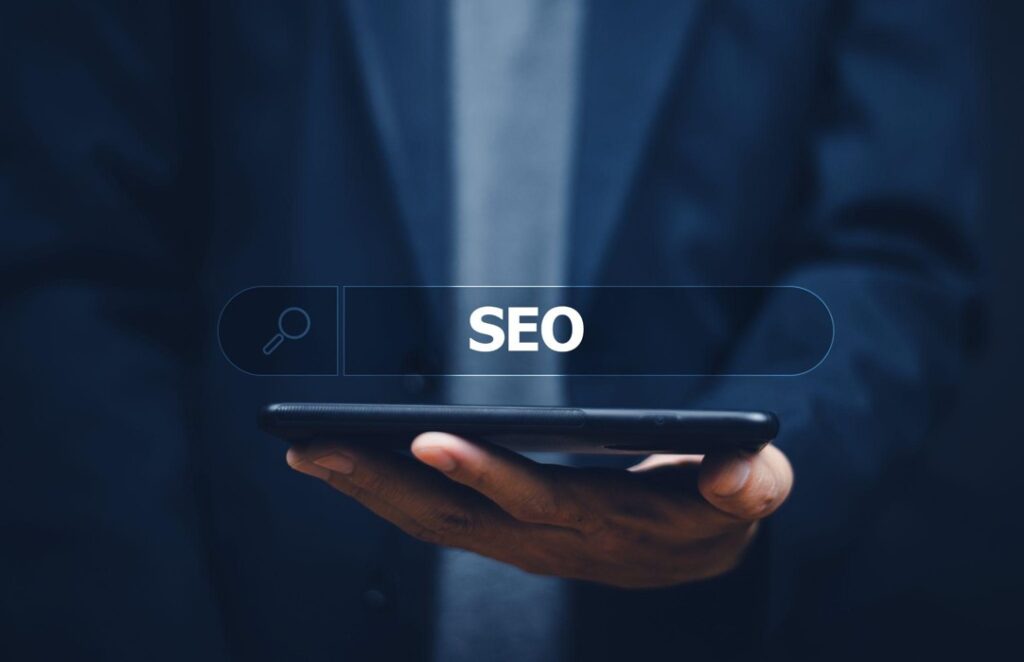
Use PPC marketing for targeted campaigns and quick results while SEO builds your website’s long-term authority. Together, they create a well-rounded web advertising strategy that drives traffic, actions, and brand growth.
FAQ
What does PPC mean in marketing?
PPC (Pay-Per-Click), also known as search advertising or contextual advertising, is an internet marketing model where advertisers pay a fee each time their ad is clicked. This means you only pay when potential customers interested in your product or service interact with your ad.
How PPC marketing works:
- Choose a platform: it can be run on various platforms, such as Google Ads, Bing Ads, and others.
- Define your goals: What do you want to achieve with PPC? Increase leads, boost sales, raise brand awareness?
- Collect keywords: Select key search terms that people use to search for products or services like yours.
- Create ads: Write compelling ads that will entice people to click.
- Set a budget: Determine how much you’re willing to spend on your ad campaign.
- Choose a bidding strategy: Decide how you will bid on your keywords.
- Track results: Monitor the performance of your campaign and make adjustments as needed.
Disadvantages of PPC:
- Competition: There can be high competition for popular keywords, which can drive up click costs.
- Complexity: Creating and managing effective PPC ads can require time and effort.
- Need for constant monitoring: You must constantly monitor your and make adjustments to keep them effective.
This advertising model can be a powerful tool for any business that wants to boost online sales and attract new customers. However, it’s important to understand that Google ads are an investment, and it takes proper planning and execution to succeed.
Optimizing ad relevance, destination page expe
rience and expected click-through rate enhances quality score, boosting ad campaign performance.
What is PPC in terms of marketing?
Imagine PPC advertising as an auction where you compete for users’ attention. You bid on keywords relevant to your business. The higher your bid, the better your chances of your ad appearing at the top of search results or on other platforms. But you only pay when a user clicks on your ad.
PPC advertising is:
- You attract users who are already searching for what you offer.
- It’s easy to track clicks, costs, and actions.
- You can adjust bids and budgets in real time.
- Pay-per-click can quickly lead to traffic and conversions.
PPC is a powerful tool for any marketer who wants to attract more customers and increase sales.
Is PPC a good marketing strategy?
Yes, this strategy can be a good marketing strategy, but it depends on your specific goals and budget. Here’s a breakdown of its strengths and weaknesses to help you decide:
Strengths of PPC:
- Targeted Traffic: Google Ads allows you to reach users actively searching for products or services like yours. You can target by demographics, interests, and online behavior for maximum relevance.
- Measurable Results: highly trackable. You can see metrics like clicks, actions, and cost-per-acquisition (CPA), allowing you to your ad sets for maximum return on investment (ROI).
- Fast Results: Unlike SEO, which takes time to show results, paid search can generate immediate traffic and conversions.
- Brand Awareness: Even if users don’t click on your ad initially, repeatedly seeing it can increase brand awareness and recognition.
Weaknesses of PPC:
- Cost: PPC ads require ongoing investment. You’ll need to factor in keyword costs, competition, and your daily/total budget.
- Management: Optimizing marketing campaign ads for success takes time and effort. You must monitor performance, adjust bids, and test different ad variations.
- Reliance on Keywords: Choosing the right Key search term is crucial for Cost-Per-Click (CPC) marketing success. Irrelevant key search phrases can lead to wasted ad spend.
Overall, pay-per-click marketing can be a valuable marketing tool, especially when combined with SEO, for a well-rounded strategy. If you’re looking for a targeted way to drive traffic and actions quickly, paid search is worth considering.
What is PPC for beginners?
The key benefit for beginners? You only pay when someone clicks your ad. This means you’re reaching interested users without wasting money on irrelevant views.
Getting started with Cost-Per-Click (CPC) marketing is manageable:
- Platforms like Google Ads offer user-friendly interfaces and tutorials.
- You can set a daily or total budget to control your spending.
- You can target specific demographics (age, location) to reach the right audience.
Here are some additional tips for beginners:
- Start small: Don’t spend a lot of money on your first PPC operation right away. Start with a small budget and gradually increase it as you gain experience.
- Use high-quality keywords: Choose relevant and high-quality Key search term that potential customers are likely to search for.
- Create compelling ads: Your ads should stand out and entice people to click.
- Track your results: Continuously monitor and make adjustments to keep them effective.
- Use Cost-Per-Click (CPC) ads tools: There are many tools available to help you create and manage your sponsored ads.
PPC can be challenging, but it’s an effective way to grow your online business. With the right approach, the strategy can help drive more traffic, increase sales, and achieve your marketing goals.
Display ads, visually captivating advertisements embedded within websites and apps, engage audiences and drive brand awareness t
hrough targeted placements. Leveraging audience demographics, interests, and online behavior, display ads deliver personalized visual messages, increasing brand recall and engagement.


